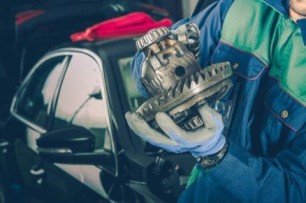Blog Details - Magma HDI

What is a differential, and how is it useful for cars 8th August 2022
Have you ever been in a situation where the mechanic asks you to change or repair something, and you have no idea what they are talking about? Don't worry; we got you covered. In this article, we will talk about one less discussed car part known as the differential. This article will walk you through car differential's key points and functionalities.
What is a car differential?
A set of gears that transmits power to the wheels is known as the differential. The differential helps apply torque (rotational force) on the wheels to make turns and operate at different speeds.
The differential is a critical player in the movement of the driving wheels despite their positioning. We all are aware of the fact that while making a turn, the wheel on the outside turns faster than the wheel on the inside. Differentials keep such movements intact, smooth, and crisp.
Differential gets its name from the root word "difference." The name is related to the part where the differential helps turn the wheels at various speeds. Hence, the term is justified.
Working of a differential.
The differential is made up of several parts, of which the main components are considered to be the ring and the pinion gears. The carrier assembly is the part where the ring gets attached. A set of gears called spider gears are placed inside the carrier. These spider gears are again made up of a group of pinions and the side gears, which mainly function to create the differential action/activity.
After this is set in motion, the flow of power inside the differential forces the pinion gear to drive the ring gear, which ultimately rotates the carrier. This carrier then sets the pinion gears in motion and pushes the side gears. There are driver axles that help transmit the torque attached to the side gears, which ultimately drive your car's wheels.
Where is the differential found?
The differential is usually placed in the front axle assembly or the rear axle assembly of your car in modern cars and trucks. You will notice a centre differential that helps drive the front and the rear axle assemblies in AWD-all-wheel drive applications.
Types of differentials.
Vehicles use different types of differentials which accomplish their functions differently when attached to other technological systems in the car.
Open differentials have a relatively simple and efficient design. They have open designs, which include a pinion gear that drives the ring gear and sends power to both the front and the rear axles for further operation.
Limited slip differentials follow a similar pattern as the open differentials except where they can power both the axles even if one wheel loses traction. Limited slip differentials also contain a few extra parts called the clutch packs, which help in locking the left and the right side of axles together in case a wheel loses its traction.
Other types of differentials include locking differential and torque vectoring differential.
How would you know if there is an issue with your differential?
Your car's differential can wear out eventually due to various reasons. It would be best if you watched out for these signs to get an idea about the condition of the differential, such as annoying noise and vibrations, clunking noises, weird sounds while making turns, oil leakage, etc.
We hope this information helped you gain a better insight into the functions of different parts of your car. And while we are talking about understanding your vehicle's mechanical systems, it is equally essential to ensure the safety of your car. Explore all available options from the comfort of your home and Buy Car Insurance Policy Online that would optimally cater to your needs.
Click HERE to know more about how you can buy car insurance policy online.
Disclaimer: The information provided above is for illustrative purposes only. To get more details, please refer to policy wordings and prospectus before purchasing a policy.

